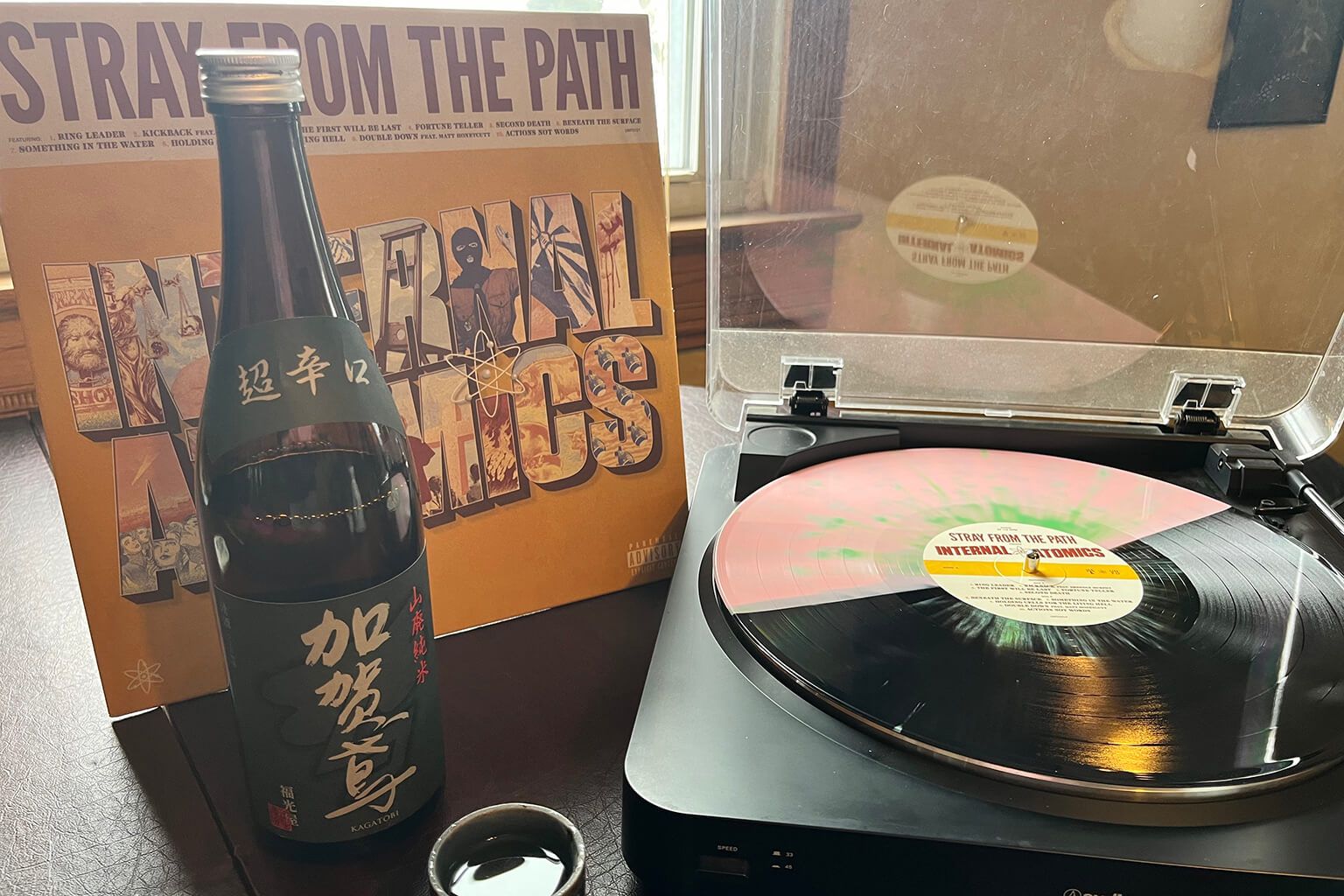There are several Japanese terms to describe the types of winter/spring sake. Even though the terms do not have any legal requirements or definitions, these help you understand and appreciate the beauty of Japan’s four seasons.
Types of winter/spring seasonal sake
“Shinshu” (new sake) means sake made from the most recently harvested rice. Mostly unpasteurized with few exceptions. Any sake released between November to March can be called shinshu. The following three terms are categories related to shinshu you might want to memorize to advance your sake knowledge!
- “Shiboritate” (freshly squeezed) has the narrower definition, only used to describe the sake that is available immediately after pressing the sake produced in the earlier phase.
- “Hatsushibori” (first squeeze) is a term that can be used for sake made with the very first batch of the brewing season only.
- “Arabashiri” (first free-run) is the term given to fresh sake made by collecting the first-run. First-run is the sake liquid that flows freely through the sake press with minimum pressure.
Brewery year
Brewery year (BY) is a sake production calendar year, commencing every July 1 and ending the next year on June 30. Rice harvest starts in September, and the brewing season starts in October. Hatsushibori is the very first batch of sake produced using the recently harvested rice. The release date of the sake is decided by the breweries.
Without pasteurization
Regular sake go through the pasteurization process twice. Pasteurization is the heat treatment process that destroys pathogenic microorganisms in certain food and beverages. This enables sake to stabilize its content and adds security to the product quality. However, because it involves heat, the freshness of the aroma or flavors can be subdued.
On the other hand, hatsushibori, shiboritate and arabashiri often don’t go through any pasteurization, preserving the raw state to maintain the fresh quality. Therefore, the sake is in a raw state, so it can maintain the freshness quality. It usually has a fruity aroma and tastes lively on the palate with a crisp finish.
Does hatsushibori have an expiration date?
In general, sake does not have expiration dates. However, unpasteurized hatsushibori sake can be sensitive to outside environmental factors such as heat, light and smell. Therefore, it is best to store it in the refrigerator. Once opened, it is recommended to drink it within a week or so to prevent any possible deterioration. Learn more about How to store sake.
Pairing
Hatsushibori tends to have a refreshing flavor with almost a light “frizzante” (gently sparkling Italian wine) sensation, resembling the acidity of a quality white wine. It pairs well with simple dishes like sashimi and carpaccio as well as typical Japanese winter, simmered dishes such as “oden” (fish cake stew) and “nikomi” (another popular winter stew of different varieties like beef tendon or miso with udon noodles). It also accommodates beautifully with spices and herbs so it has a wide range of pairing potentials.
Trivia to note
If you have visited a sake brewery in Japan, you might have seen a “sugitama” (or “sugidama”), a ball-shaped object made with cedar leaves. Some regions call this “sakabayashi.”
Usually, breweries hang it on their entrance area to announce, that “we’ve started selling the hatsushibori,” or simply, “the new sake is available.” When the ball looks fresh green, it means the sake is still young. And when the leaves dry out and start browning, it is about time that sake has aged and matured.
The tradition of sugitama is believed to have originated in Omiwa Shrine, the oldest shrine in Japan, located in Nara prefecture. Omiwa Shrine is one of the three major sake shrines in Japan, dedicated to the god of sake.
Every year on November 14, Omiwa Shrine hosts “The Sake Festival,” where brewers and breweries from all over Japan gather to pray for the safety and success of the sake brewing. Sugitama hanging is an important ceremonial event of the festival. At the Omiwa Shrine, they use a huge cedar ball made of cedar from Mount Miwa, which is believed to have divine power.
This tradition started centuries ago, and now the concept of respecting and sending prayer to the god of sake has transitioned into the modern-day practice.
5 Recommended spring seasonal sake
Heiwa “KID” Shiboritate
Made using four different yeasts and Gohyakumangoku rice, Heiwa “KID” Shiboritate is a seasonal sake that offers bright, crisp flavors that retain their charm due to being completely unpasteurized.
Kamikokoro “Tokagen” Shiboritate
This sake is born from white peach house yeast and Akihikari rice. Peach yeast isn’t used in any other brewery, and although Akihikari rice isn’t a registered sake rice, they’ve worked with contract farmers to make it super special with particular attention to terroir.
Gokyo “Arabashiri”
This Arabashiri is pressed from Nihonbare and Miyamanishiki rice grown in the Yamaguchi prefecture and brewed with a yeast known to give juicy melon flavor.
Otokoyama “Shiboritate”
Brewed in Asahikawa, home to the Asahikawa Zoo, the polar bears depicted on the bottle represent both the popular creatures at the zoo and that Otokoyama “Shiboritate” is a wintertime sake. Being a “genshu,” or undiluted, this sake has a tad higher ABV and is great on the rocks.
Wakatake “Oniotome” Yume
Wakatake “Oniotome” Yume utilizes local Shizuoka prefecture water, yeast and rice to full effect. The refined temperature control and quick bottling allows this sake to capture a full aroma and flavor.















